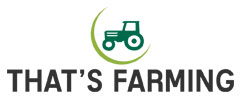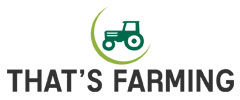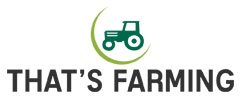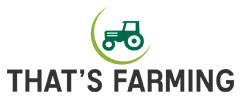“We try to keep our system as simple as possible and minimise the workload as much as possible. We use easy-calving genetics and try to let the cows do the work.”
Those are the words of Ross Brady, who runs a suckler herd in partnership with his father, Noel.
Grassland management and superior genetics are to the fore on their 50ha enterprise (38ha owned and 12ha leased), which is based in Co. Offaly.

Commercial and pedigree herd
The Brady’s herd consists of 50 commercial suckler cows along with 10 pedigree Angus, Charolais and Shorthorn females, which are farmed under the Clarach prefix.
“We use a range of breeds on our commercial herd. I believe there is a place for all beef breeds in commercial herds – depending on what your market is and what you wish to achieve.” explained Ross, who holds a full-time position at Glanbia.
“I think Charolais are the ultimate cattle for growth if that’s what you are after. Shorthorns are good for hardiness/good locomotion, fertility, and easy fleshing.”
“Angus cattle, for me, are the all-round breed, in terms of ease of calving, a short gestation, eating quality, easy fleshing, growth, hardiness and appearance.”

Ideal suckler cow-type
They try to breed heterosis (hybrid vigour) into their commercial herd by using the best traits from different breeds and incorporating them into their ideal cow-type.
“We want a cow that is docile, calves every <365 days unassisted and rears a good calf that will be easy fleshing and kills out well.”
“We also want our cows to eat less than the average cow but still rear a good calf.” the Offaly native added.

100% AI and grassland management
Ross, a DIY AI technician, worked for Dovea Genetics during his third-level studies and now oversees the farm’s breeding programme.
Vasectomised bulls with chin balls and paint are utilised for heat detection to achieve a tight calving period during the months of February and March.
“We put a big emphasis on grassland management, and we feel we get most from our grass by calving during these months and having our cows and calves on top-quality grass when they need it most.”
“It also allows us to cut our winter costs having dry cows on a high fibre diet over the winter months.”

Progeny
The family sells pedigree bulls to both dairy and beef farmers for breeding purposes. They are currently finishing commercial bulls under 14 months; however, they currently looking at changing this to a 16/20-month steer beef system going forward.
All heifers not retained for breeding purposes are either sold as surplus replacement stock or are finished at 18/20-months off grass; females that are retained for breeding purposes calve down under 24 months.
“We calve within 8-9-weeks as we put a big emphasis on fertility; the herd calved in 9 weeks this year,” Ross added.
Twenty20 beef club
They also rear dairy-bred calves which they bring to slaughter; the father-and-son team are members of the Twenty20 beef club which is a new programme with Glanbia/Kepak.
“We are very excited about this programme as it brings us some certainty to the beef price we will receive for our cattle.” added the Gurteen Agricultural College and Waterford Institute of Technology (WIT) graduate.

Improvement
The suckler farmers are constantly striving to improve their herd, with data recording and analysis playing a pivotal role in their efforts.
They are advocates of programmes, including BEEP and BDGP, which “capture data and information that can only help suckler farmers to be more efficient and sustainable”.
“We monitor ICBF all the time and find our best cows are our highest-index cows. I would love to see more information available to ICBF as I feel this is a hugely important aid to commercial suckler farmers.”
“We really need to utilise all the technologies available to us to try to breed a more efficient and profitable herd for the future,” Ross added.

Future
Looking ahead, the Offaly natives intend to continue to grow their herd if nitrates allow them to do so.
Ross has a burning desire to make further improvements in the areas of genetics and performance within the herd.
“I would like to see more of a focus on meat-eating quality in Ireland – I think it’s an area we are inconsistent on compared with other big players in the industry across the world.”
“We have all the other advantages over a lot of other nations and countries in terms of traceability and grass-fed greatness, but I feel we target growth genetics too much which doesn’t always necessarily mean tasty beef to eat, which to me, is the most important thing.”
“If a beef consumer has a bad beef eating experience, they are less likely to order beef the next time.”
“I would like to see meat eating quality part of the grading systems and get paid on that.”
The young suckler farmer said he does not see why Ireland cannot have the best beef in the world and supply this to the high-end customers at a premium.
“There is a lot of negativity around beef farming at present and I can see why with the current pressure on beef price but we need to look at how we can get better and be at the high-end of the beef chain.”
“As an industry, we need to look long-term for solutions because I don’t think any farmer who buys, or rents land is thinking short-term.” Ross concluded.
More information
Follow Clarach Livestock on Instagram and Twitter.
To share your story, email – [email protected]





